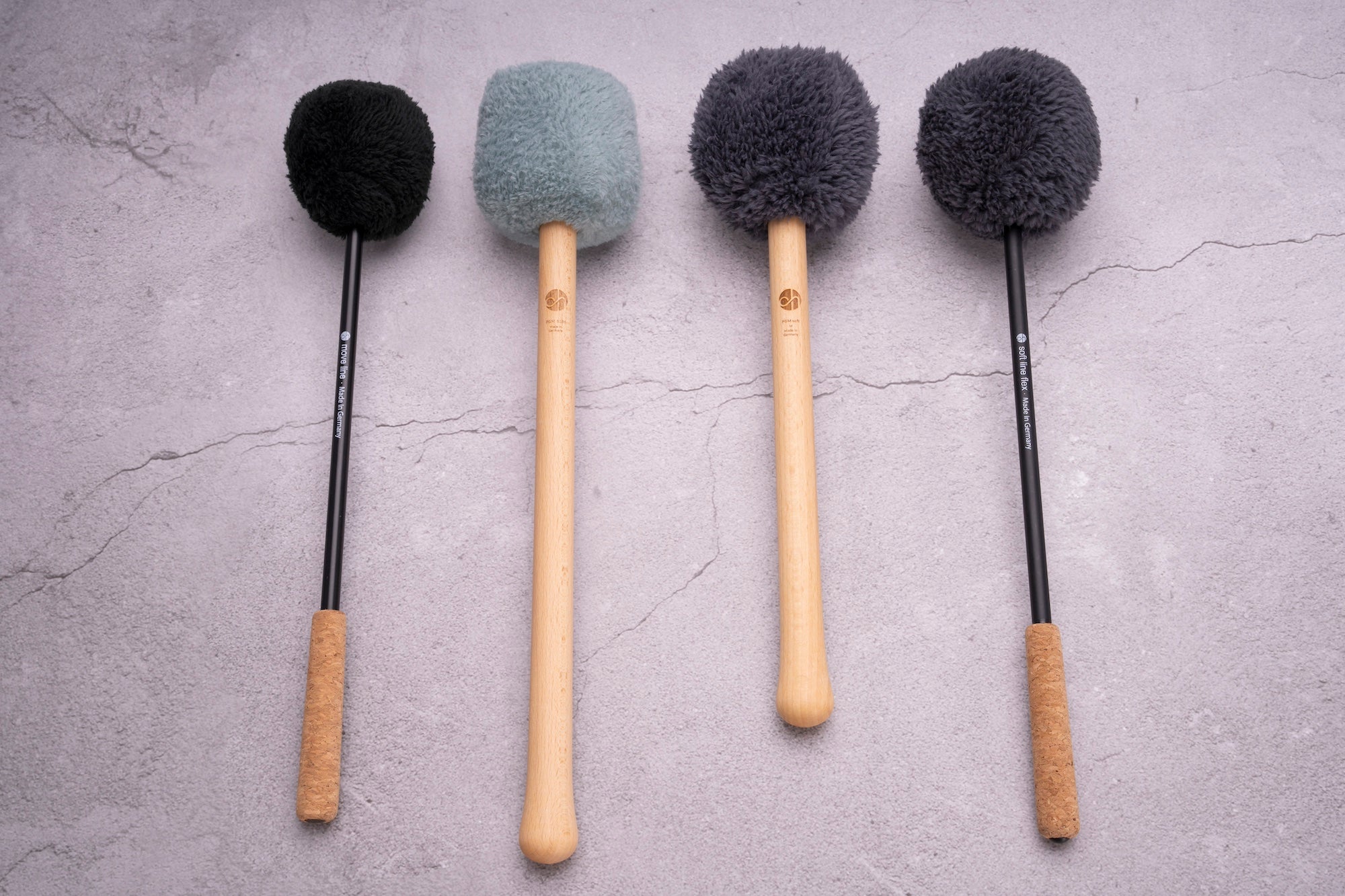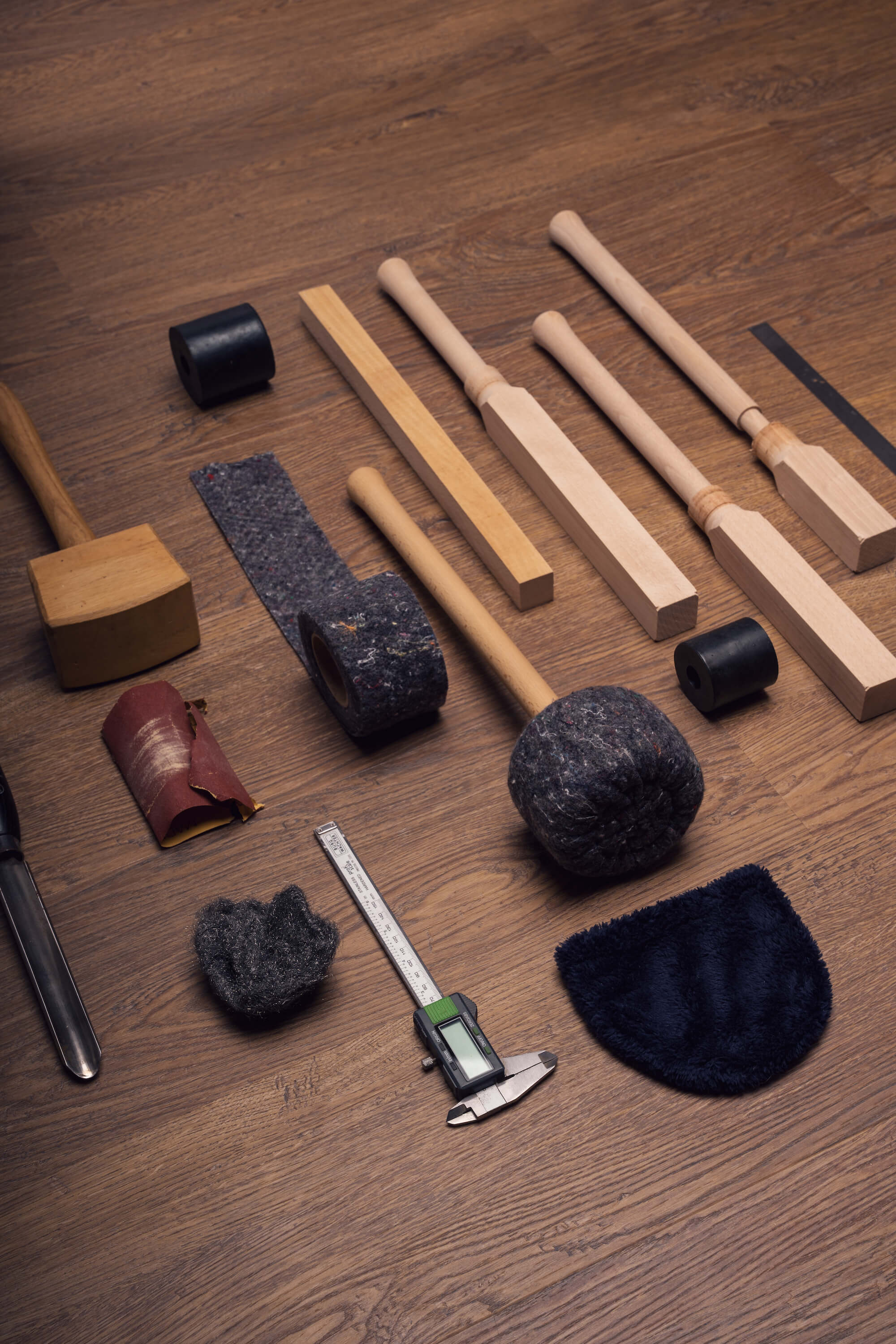The right mallet can take your gong playing to the next level. But with all the options now available, the choice can be overwhelming. Soft or hard? Big or small? For meditation or performance? But don't worry - our blog post will help you with exactly these questions.
You will get an overview of what is important: sound, size, playing technique, handling and, of course, your personal feeling. In the end, what counts is what feels good to you and strengthens your connection to your gong.
What sounds do you want to create with the mallet?
The choice of the right mallet significantly influences the timbre of your gong playing - from deep and warm to bright and clear.
- Deep, warm & soft sounds: Choose a large, softly padded mallet.
- Bright, concise sounds: Smaller or harder mallets are more suitable.
- Versatile soundscapes: Combine different mallets with each other.
What size is your gong?
The size of your gong determines which mallets are best suited for an optimal sound spectrum.
- Kleine Gongs (< 60 cm): Entscheide dich für leichtere und kleinere Mallets für präzise Kontrolle.
- Large gongs (> 60 cm): Choose larger mallets for powerful, voluminous tones.
Which type of gong would you like to play?
Each type of gong has its own sound characteristics - the right mallet emphasizes the specific sound nuances in the best possible way.
- Mallets with thicker padding are suitable for TamTam gongs for a rich sound.
- Finer mallets are suitable for Feng Gong for a controlled response.
What is the Mallet intended for?
Whether for meditative sound baths or gong baths or powerful performances - the choice of the right mallet has a significant influence on the sound experience.
- Meditation and sound baths: Choose softer mallets for calming, long-lasting sounds.
- Performances and concerts: add mallets with a harder core for powerful sounds.
Which playing technique would you like to use?
Depending on how you want to play your gong, you should use mallets with different padding and ergonomics for optimum control and sound development.
- Soft sound strokes: Choose softly padded mallets for slow, flowing movements.
- Dynamic gong playing: opt for more stable and, above all, ergonomically shaped mallets.
Tip: We are always giving you new ideas and inspiration for your gong playing in our sound recipes.
Find out about the material, workmanship and durability
A high-quality mallet should be well made, comfortable to hold and made of durable materials. These questions can help you when evaluating a mallet:
- Are the materials of high quality and durable?
- Are there any visible seams, glued areas or unevenness that could affect the playing quality?
- Is the handle of the mallet ergonomically shaped?
Is the Mallet easy to handle?
A mallet that sits well in the hand and is optimally balanced makes playing easier and ensures greater precision.
- Ergonomic handle: Make sure the handle is well-balanced and sits comfortably in your hand.
- Non-slip: Textured or waxed handles provide more control.
Do you have any personal preferences?
Choose a mallet that inspires you - design and colors can strengthen your connection to the instrument.
- Do you prefer discreet and understated designs?
- Which colors particularly appeal to you?
- Which materials do you find aesthetically pleasing?
Last but not least: get advice from an expert
Choosing the right mallet can sometimes be overwhelming due to the variety of options available. If you are unsure which variant best suits your gong and your playing style, don't hesitate to seek professional advice.
Simply contact us via our contact form or WhatsApp (bottom right of the browser window). Alternatively, you can also contact a trusted specialist dealer who can give you a personal recommendation.





